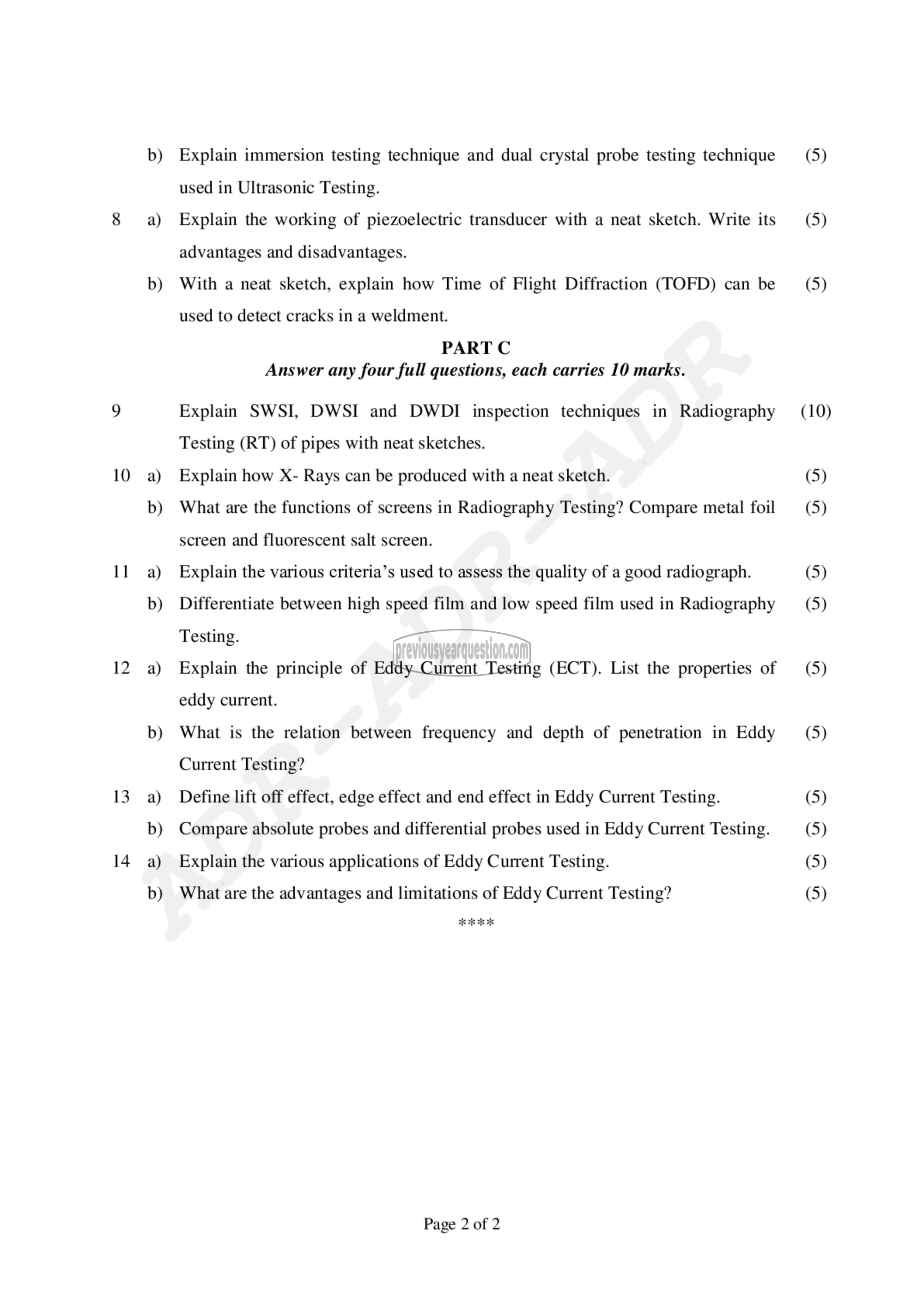APJ ABDUL KALAM TECHNOLOGICAL UNIVERSITY Previous Years Question Paper & Answer
Semester : SEMESTER 5
Subject : Non-Destructive Testing
Year : 2020
Term : SEPTEMBER
Branch : MECHANICAL ENGINEERING
Scheme : 2015 Full Time
Course Code : ME 367
Page:2
10
11
12
13
14
b)
a)
b)
a)
b)
a)
b)
a)
b)
a)
b)
a)
b)
Explain immersion testing technique and dual crystal probe testing technique
used in Ultrasonic Testing.
Explain the working of piezoelectric transducer with a neat sketch. Write its
advantages and disadvantages.
With a neat sketch, explain how Time of Flight Diffraction (TOFD) can be
used to detect cracks in a weldment.
PART ^
Answer any four full questions, each carries 10 marks.
Explain SWSI, DWSI and DWDI inspection techniques in Radiography
Testing (RT) of pipes with neat sketches.
Explain how X- Rays can be produced with a neat sketch.
What are the functions of screens in Radiography Testing? Compare metal foil
screen and fluorescent salt screen.
Explain the various criteria’s used to assess the quality of a good radiograph.
Differentiate between high speed film and low speed film used in Radiography
Testing.
Explain the principle of Eddy Current Testing (ECT). List the properties of
eddy current.
What is the relation between frequency and depth of penetration in Eddy
Current Testing?
Define lift off effect, edge effect and end effect in Eddy Current Testing.
Compare absolute probes and differential probes used in Eddy Current Testing.
Explain the various applications of Eddy Current Testing.
What are the advantages and limitations of Eddy Current Testing?
Page 2 of 2
(5)
(5)
(5)
(10)
(5)
(5)
(5)
(5)
(5)
(5)
(5)
(5)
(5)
(5)
